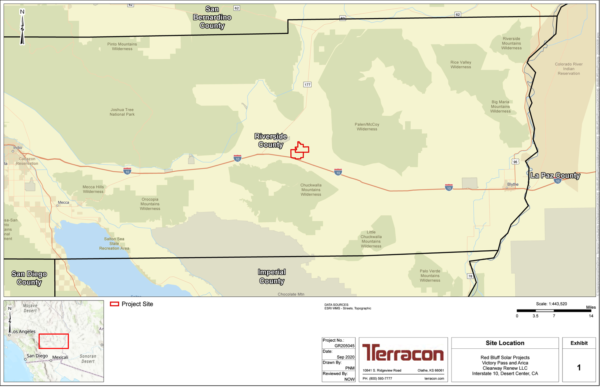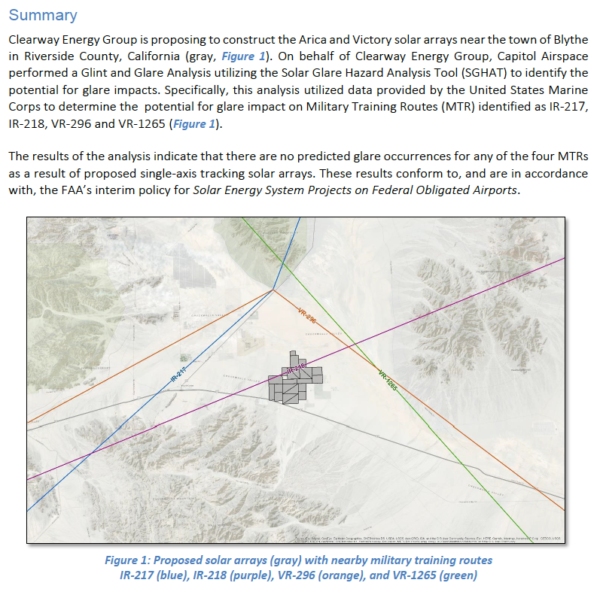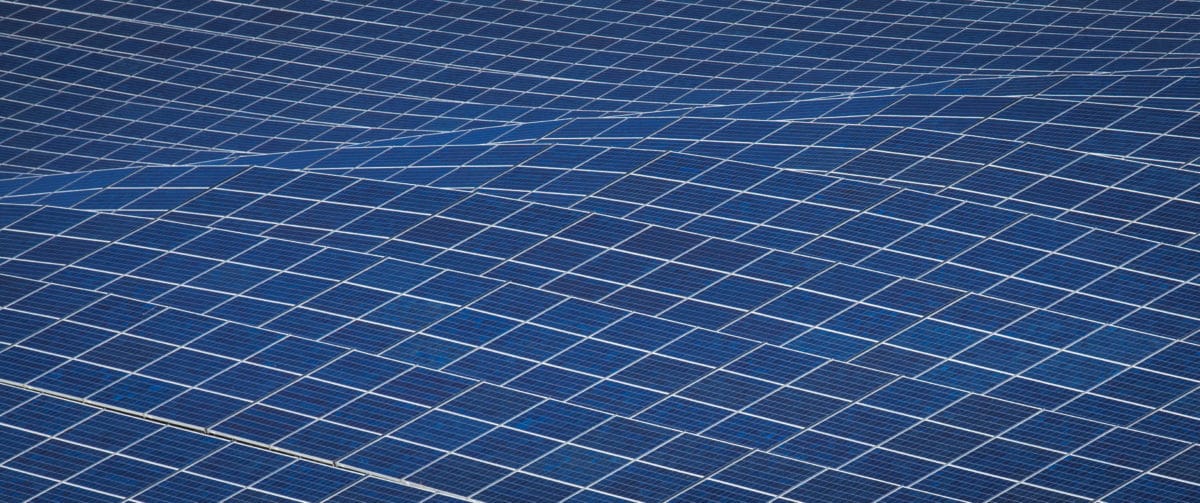The US Department of Interior’s Bureau of Land Management (BLM) has given Notice to Proceed to two solar power plants – the 200 MWac Victory Pass and 265 MWac Arica Solar Projects. Construction may have begun as early as this past Monday, June 13th.
The two projects are the first projects deployed in areas identified as suitable for development in California’s Desert Renewable Energy Conservation Plan. The plan has identified 10.8 million acres of public land that attempt to limit the effects on nature of developing large land using wind and solar power deployments.

These projects are surrounded by sensitive areas, and the development plans contain the standard considerable conservation policies. For instance, to manage weeds brought in from other areas undercarriages and tires are to be cleaned, project vehicles will stay onsite in designated areas, certified weed-free mulch and straw will be used, reestablishment of native vegetation need occur, and general monitoring of plant life to protect native species must be a practice.
Specifically, the developer has been requested to pay special attention to cactus, nolina, and yucca. Any plants discovered in development areas, must be collected, and protected, to be replanted later.
It was noted that particular attention must be paid to micro-trash – plastics, bolts, nuts – that might be attractive to predators due to their higher visibility.
Regarding land lease rates, BLM told pv magazine USA that the project’s will pay the newly discounted rates:
As described in Section B.1 of MS-2806, Rent Chapter 6, the reduced rates will be applied to all wind and solar projects authorized by the BLM, beginning (retroactively) with calendar year 2021. The Arica Solar and Victory Pass Solar projects will be billed under the reduced rate schedule.
The Arica Solar facility is 1,355 acres and 265 MWac. If the facility comes online in 2024, this means their first two years of land rights rates are $143,326.45 and $276,056.80, before hitting $541,287.15 and slowly increasing over time. The fee is composed of a $2,000 per megawatt payment, plus a land lease rate that starts at $7.99/acre and increases by 2.1% annually. In total the facility will pay over $15.6 million in land rights fees.
The 200 MWac Victory facility, to be built atop 1,310 acres, will pay $100,466.90, $210,689.60 and $410,912.30, in its first three years and greater than $11.9 million over thirty years.
The facilities requested 50-year right of way (ROW) grants. The lifespan of the technology at Arica and Victory is expected to last 35 years and 30 years, respectively, before potentially being repowered.

The facility was required to do multiple glare analysis to determine if there’d be an effect on four noted military training routes.
These two projects are also the first formally approved since the current administration has made renewables on public land a priority – aiming for 25 GW of capacity. There were hints of this plan as far back as 2014 – with the Biden administration reupping it after the prior administration sought to slow it.
Included in this push were the first pieces of land – located in Utah and viable for up to 600 MW of capacity – the BLM pre-approved for development and submitted to solar companies.
This content is protected by copyright and may not be reused. If you want to cooperate with us and would like to reuse some of our content, please contact: editors@pv-magazine.com.








By submitting this form you agree to pv magazine using your data for the purposes of publishing your comment.
Your personal data will only be disclosed or otherwise transmitted to third parties for the purposes of spam filtering or if this is necessary for technical maintenance of the website. Any other transfer to third parties will not take place unless this is justified on the basis of applicable data protection regulations or if pv magazine is legally obliged to do so.
You may revoke this consent at any time with effect for the future, in which case your personal data will be deleted immediately. Otherwise, your data will be deleted if pv magazine has processed your request or the purpose of data storage is fulfilled.
Further information on data privacy can be found in our Data Protection Policy.